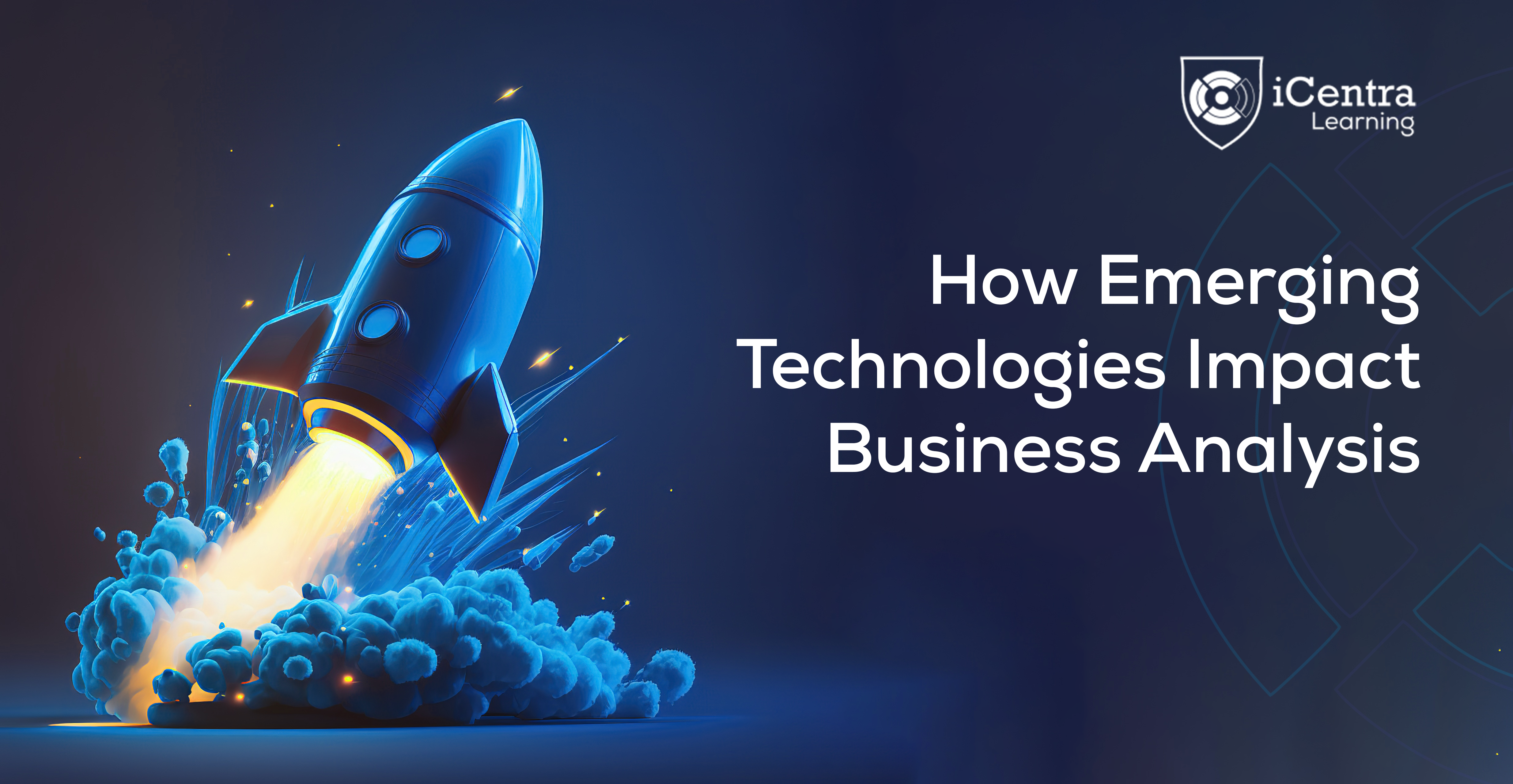The continuous progress in technology is causing a rapid shift in the field of business analysis. Emerging technologies are changing the very definition of what it means to be a business analyst; they are no longer merely tools. We’ll look at how these developments are affecting the industry and what that means for business analysis going forward in this blog.
The Changing Role of the Business Analyst
The role of a business analyst was once defined primarily by gathering requirements, creating process flows, and ensuring that business needs were clearly communicated to technical teams. However, with the advent of technologies like Artificial Intelligence (AI), Machine Learning (ML), and Robotic Process Automation (RPA), the role has evolved into something far more dynamic and strategic.
Today, business analysts are not just translators between business and technology; they are innovators and strategists. The need to understand not just how a system works, but how new technologies can unlock new business opportunities, is now more critical than ever. This shift requires continuous learning, adaptation, and thinking beyond traditional boundaries.
AI and Machine Learning: From Data to Insight
AI and ML have been game-changers in business analysis. A few years ago, the idea of machines making decisions was something out of a science fiction novel. Today, it’s a reality that business analysts must navigate.
One of the most significant impacts of AI and ML is how they’ve transformed data analysis. In the past, analyzing large datasets was a labor-intensive process that could take weeks. Now, AI algorithms can sift through massive amounts of data in seconds, identifying patterns and insights that would have been impossible to detect manually.
This enhancement doesn’t mean that the role of a business analyst has been diminished; rather, it has been elevated. Business analysts are now tasked with interpreting these insights and translating them into actionable business strategies. It’s a shift from simply reporting on what happened to predicting what could happen and advising on how to leverage these predictions for strategic advantage.
Robotic Process Automation: Streamlining Operations
Robotic Process Automation (RPA) has taken over repetitive, rule-based tasks, freeing up business analysts to focus on more value-driven activities. Tasks like data entry and process documentation, which once consumed significant time, are now automated, allowing more focus on strategic analysis and problem-solving.
However, this also means that business analysts need to develop new skills. Understanding how RPA works and how to implement it effectively has become a crucial part of their toolkit. More importantly, identifying which processes are ripe for automation and which require a more nuanced, human touch is now a critical skill.
Blockchain: Redefining Trust and Transparency
Blockchain technology, once synonymous only with cryptocurrencies, is now finding applications in various industries. From supply chain management to secure voting systems, blockchain’s ability to provide transparent and tamper-proof records is revolutionizing the way data integrity and trust are perceived.
Business analysts are now faced with the challenge of understanding how blockchain can be integrated into business processes to enhance transparency and security. This requires a deep dive into the technical aspects of blockchain, while also considering the broader implications for business models and customer trust. It’s about balancing technical feasibility with strategic value.
The Human Element: Navigating Change
While these technologies are powerful, it’s important to remember that they are tools, not solutions. The human element—our ability to think critically, understand context, and navigate complex interpersonal dynamics—remains irreplaceable.
One of the biggest challenges is helping stakeholders navigate the uncertainty that comes with adopting new technologies. There’s often resistance to change, driven by fear of the unknown or concern over job security. This is where the role of a business analyst becomes crucial. Advocating for technology while also addressing the human concerns that come with it is key.
Continuous Learning: The New Normal
Staying relevant as a business analyst in the age of emerging technologies requires a commitment to continuous learning. This doesn’t just mean keeping up with the latest tools and trends, but also developing a deeper understanding of how these technologies impact the business landscape.
Building a network of peers and mentors, attending industry conferences, and engaging in online communities are invaluable ways to stay ahead of the curve. Curiosity, openness to new ideas, and a willingness to step out of one’s comfort zone are essential traits.
Final Thoughts
The impact of emerging technologies on business analysis is profound and ongoing. Business analysts are no longer just solving problems; they are anticipating them. They’re not just implementing solutions; they’re designing them. This shift requires agility, strategic thinking, and a deep connection to both the technology and the people it affects.
While technology can enhance capabilities, it’s human insight and creativity that will ultimately drive success in the evolving field of business analysis.






